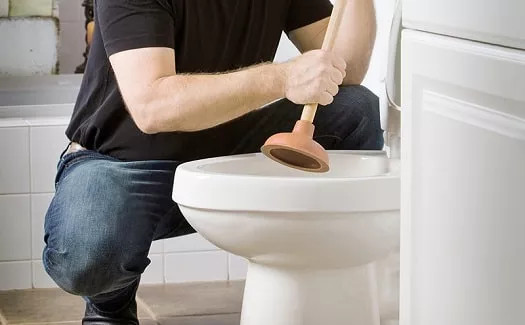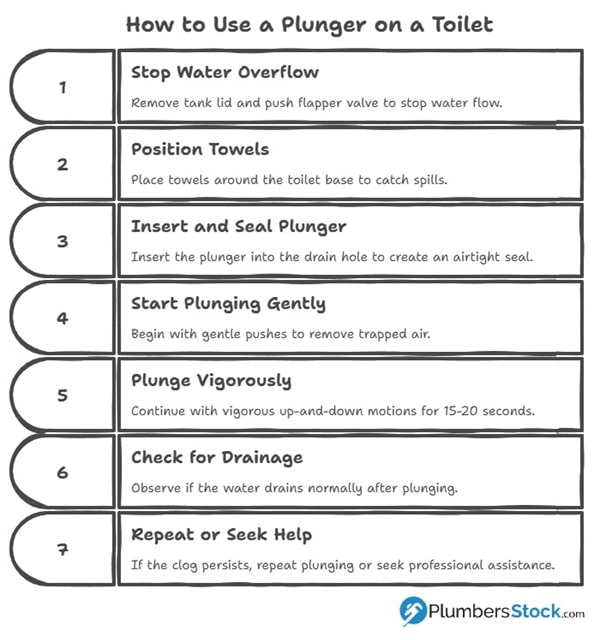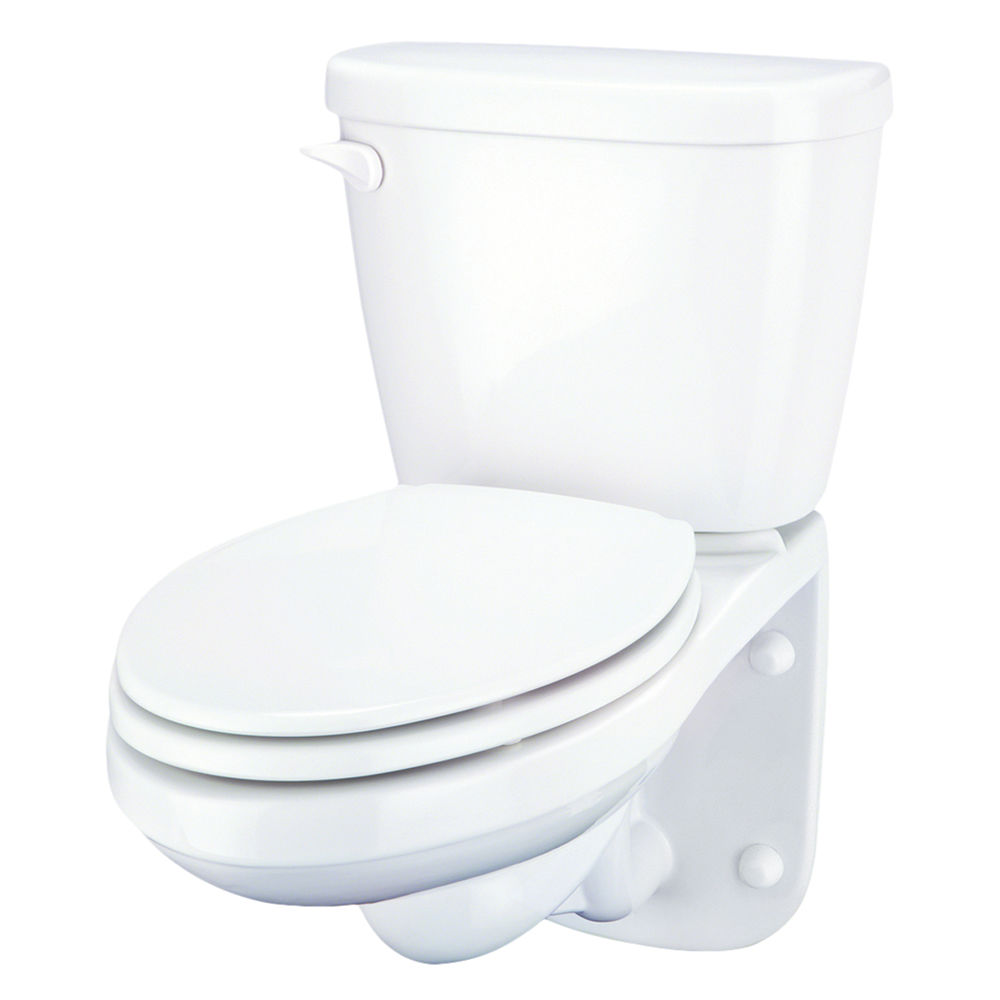
Did you know that you can use a toilet plunger to unclog a kitchen sink? It’s true. Just make sure it’s not the same one you use on your toilet. Here, you will learn how to use a plunger on a toilet, as well as how to utilize a toilet plunger for other purposes.
What Is a Toilet Plunger?
Though it’s most commonly called a plunger, you might hear someone refer to it as a force cup, plumber’s friend, or plumber’s helper. It was invented in 1874 by John Hawley to clear drain clogs. It consists of a shaft and a suction bell (the mechanism that makes the magic happen).
There are two different kinds of plungers: the cup and the flange. Use the flat-bottomed cup type to plunge flatter surfaces, such as a sink, although it will also work on a toilet. You need the flange for toilets and other applications with contours around the drain, but you can probably make do with a cup if that’s all you have.
A clogged toilet is one of the most common plumbing issues homeowners face, and fortunately, it’s often easy to fix with a plunger. Knowing how to use a plunger correctly can save you time, money, and the hassle of a messy overflowing bowl.
In this guide, we’ll walk you through how to use a plunger on a toilet effectively and safely. Whether you’re dealing with a minor clog or something more stubborn, these tips will help you clear it quickly.
What You’ll Need
- Flange-style toilet plunger (not the cup-style used for sinks)
- Rubber gloves
- Old towels or rags (to protect your floor)
- Disinfectant cleaner (for cleanup afterward)
If your toilet frequently clogs, consider checking out our selection of toilet accessories, like high-efficiency flush systems or upgraded toilet seats.
Step-by-Step: How to Use a Plunger on Your Toilet
1. Stop Water from Overflowing
 Remove the tank lid.
Remove the tank lid.- Push down on the flapper valve inside the tank to stop water from entering the bowl.
- If needed, turn off the water supply at the shut-off valve behind your toilet.
2. Position Towels Around Base
Place old towels around the base of your toilet to catch any spills or splashes that may occur during plunging.
3. Insert and Seal
Insert your flange-style plunger into the bowl so that its rubber extension fits snugly into the drain hole at the bottom.
According to Kohler’s product manual for their Wellworth toilets: “Ensure that any plunging tool used creates an airtight seal over the trapway opening for maximum pressure displacement.”
4. Start Plunging Gently
Start with slow, gentle pushes to remove trapped air—this prevents messy splashback.
Then plunge vigorously up and down while maintaining suction. Do this for about 15–20 seconds.
5. Check for Drainage
- If water begins draining normally: You’re done!
- If not:
- Repeat plunging up to three times.
- If the clog persists after several attempts, consider using an auger or seeking professional help.
When Plunging Doesn’t Work
If repeated plunging doesn’t resolve your issue:
- Try using a toilet auger (also called a closet auger).
- Inspect internal components like fill valves or flappers, which may be malfunctioning.
- If persistent clogs continue, contact a licensed plumber—it may indicate deeper issues in your plumbing system.
Prevent Future Clogs
- Avoid flushing anything besides waste and toilet paper.
- Upgrade to two-piece toilets with better flushing power if yours is outdated.
- Install quality supply lines for toilets to ensure consistent performance.
- Keep wax rings and bolts handy for repairs or leaks during maintenance tasks.
FAQ: Using a Toilet Plunger
Q: What type of plunger should I use for my toilet?

A flange-style plunger is best—it has an extended rubber flap explicitly designed for sealing inside curved toilet drains.
Q: Why won’t my clog clear even after multiple plunges?
The blockage might be deeper in your pipes or caused by non-flushable items. In that case, try an auger or call in professional help.
Q: Can plunging damage my toilet?
If done properly with gentle force and correct technique, no. However, aggressive plunging can crack porcelain or dislodge seals over time if not done carefully.
Q: How do I clean my plunger after use?
You can rinse it under hot water in another bathroom fixture (such as a tub or shower), then disinfect it with a bleach solution before storing it away dry and safely out of reach from children, pets, and others.
Resources:
- Video: Unclog Fast
- How to Unclog a Toilet without a Plunger
- Adjusting a Toilet Float
- How to Drain a Toilet
- Replacing a Toilet Flange
- Replace Toilet Supply Line
- How to Snake a Toilet
For more DIY-friendly solutions and upgrades:
- Visit our full range of modern bathroom products here
- Shop efficient toilets online now
- Explore advanced bidet seat options here
- Replace broken parts like tanks here or bowls here
Your next clog fix might just be one plunge away!
Shop PlumbersStock for Discount Toilets
Now that you know how to use a plunger, you need a toilet to go along with it. Plumbing professionals and DIY novices alike choose PlumbersStock because of wholesale prices. If you’re buying in bulk because you’re a contractor or have a large project, please contact us, and we can offer you even better deals than those listed. Save on toilet parts, plumbing tools, and more.
Related resources:
About the Author
Cliff is a proud Dad and already a Grandpa, if you can believe it! He likes to lift weights, play basketball, hunt, and do just about anything outside. He has been in the construction and plumbing business off and on since 1989 and has tons of experience in many areas of home improvement.
